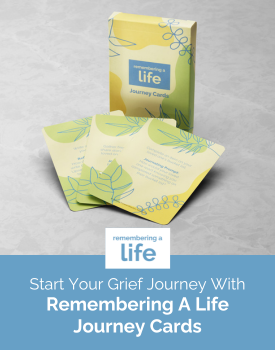Suppose you've been considering planning your own funeral or are making arrangements for someone else. In that case, you may be aware of a growing sector in funeral service – "green" or earth-friendly burials. These environmentally conscious options are becoming more popular – the Green Burial Council estimates that in 2021, there were 340 certified green burial cemeteries in the United States.
Green burial may have entered the zeitgeist in 2005 through the HBO series Six Feet Under, when Nate Fisher, proprietor of Fisher & Diaz Funeral Home, was laid to rest in a natural burial ground. Since then, the number of funeral directors who offer green burials has increased. In addition to the growing number of conservation and natural cemeteries in the United States, more and more traditional cemeteries are setting aside space for those that eschew the conventional vault and metal casket. Sorting through these new service options can be confusing, but creating a funeral that aligns with one’s commitment to the environment or to more traditional religious practices (Jesus himself was buried wrapped in a shroud), is easier than ever.
If you elect green burial, you will want to find a funeral director specializing in them as they differ somewhat from more traditional funerals. A green burial professional can guide you through the choices and options for viewings and burials to be sure your expectations match the reality. Several elements, such as the following, may be different:
Viewings: Green burial grounds generally do not accept embalmed bodies, although, with the advent of eco-friendly embalming fluids, these restrictions are loosening in some parts of the country. This means a viewing might need to occur a day or two after death, which may impact those traveling from out of town. Your funeral director will be able to speak with you about all possible options for viewing. Still, it is necessary to remember that choices may be more limited than traditional embalming and burial.
Location of Cemetery: The most affordable green burial grounds are sometimes in rural areas outside the city limits (although, again, a growing number of urban cemeteries are setting aside dedicated space for green burials), which may mean a longer travel time to the cemetery and for future grave visitation. However, traveling this longer distance can provide the basis for a yearly ritual of remembrance since it will necessarily involve more commitment and planning.
Mode of Burial: Green cemeteries typically accept shrouded bodies or bodies buried in cardboard, willow, or plain wooden caskets. Many families hand-decorate their loved one's burial containers. Some people even sew shrouds for their own burial. This hands-on ability to participate in creating one's burial container is not generally available with a more traditional cemetery burial, as it may involve a pre-made and manufactured vault or a metal coffin.
Service Options: In a green cemetery, family members can sometimes help dig and place their loved one into the grave, which is not generally possible in a more traditional cemetery. Many family members and friends find significant meaning in being able to shepherd the body to its resting place in this way.
Headstones/Markers: Options may be more limited in a green burial cemetery, as they are usually committed to preserving the landscape in its most natural form. Some do allow ground-level markers or plantings, but if an upright headstone is very important to you or your family, your funeral director can discuss the best options with you.
Cost: The actual cost of grave space and casket may be less with a natural burial green funeral, but the services of a funeral director could be slightly more expensive as green burials generally take more time and research than traditional ones. Additionally, extra care must be taken with the body if a viewing is essential. But, again, your funeral director will be able to discuss this with you.
Amy Cunningham of Fitting Tribute Funeral Services, an earth-friendly funeral director in Brooklyn, NY, advises that it is possible to 'green up' a traditional cremation if a full green burial is not possible or desired. Cremated remains can be placed in biodegradable containers directly buried in the ground. Eco-friendly alternatives (such as water-based alkaline hydrolysis) are becoming more available and popular, and some cremation facilities are participating in carbon-offset programs. In addition, there are many unique ways to use cremated remains to give back to the environment – you can even have the cremated remains cast into a concrete ball which forms a permanent reef that can be lowered into the ocean and provide a haven for new coral and fish.
Funeral directions increasingly recognize the need to respond to consumer requests for more environmentally friendly burial options. In addition, consumers are expecting high levels of service to go along with green burials. Amy advises that green funeral directors should see natural products and service options as an extension of their firm's commitment to the environment and community. "The important thing is to offer authenticity in mind, heart, and spirit," Amy says. "The green attitude shows everywhere – to make the service true to the family's values."
Many more choices are available to families who wish to honor their loved ones in an eco-friendly, environmentally conscious way. The key to creating the service you want is working closely with a funeral director who is up to date on the latest options and willing to work with you to create a memorial that is in line with your vision, whether that includes green burial or not. Still, there have never been more possibilities to create a meaningful, environment-friendly funeral for yourself or a loved one than there are today. It's getting easier to go green!


